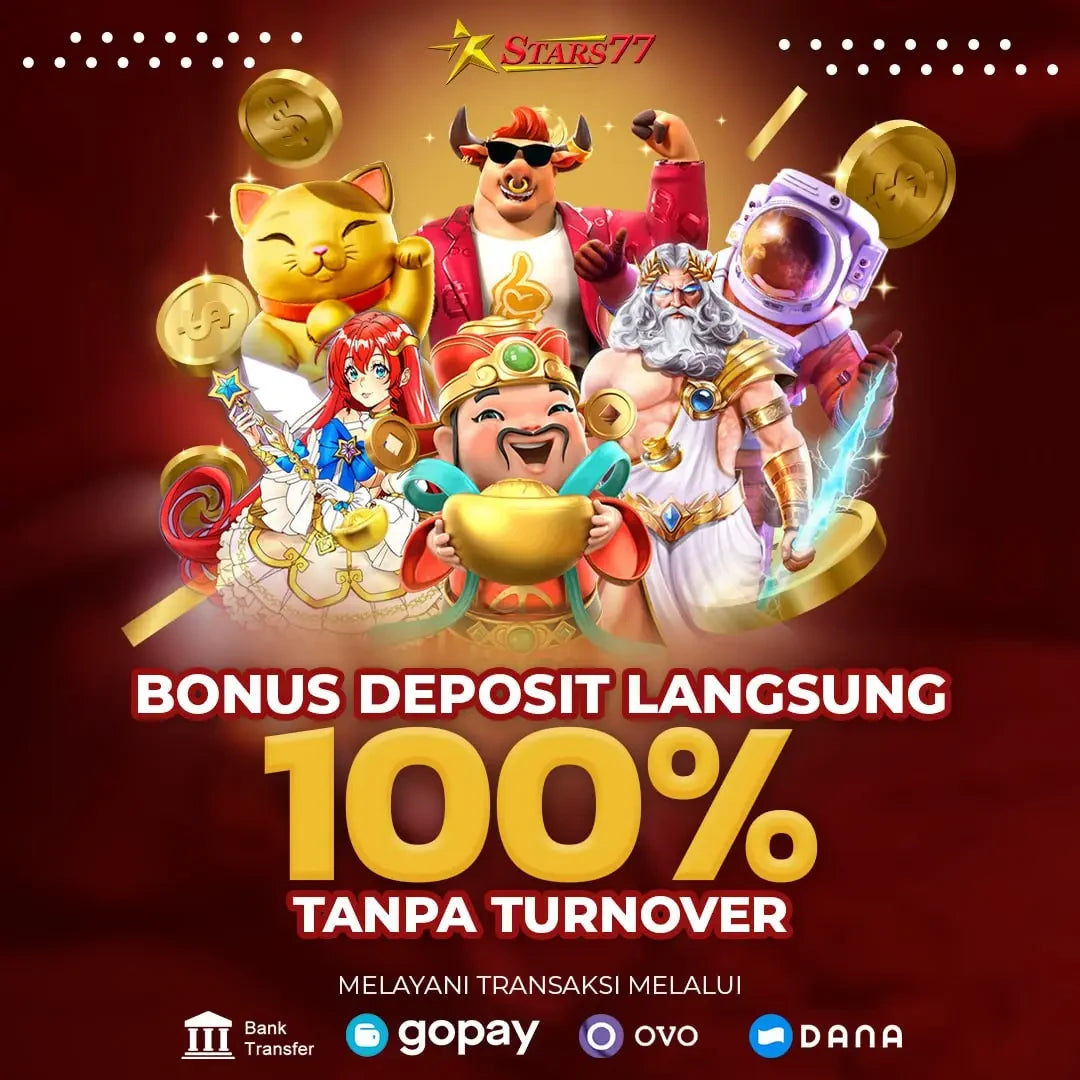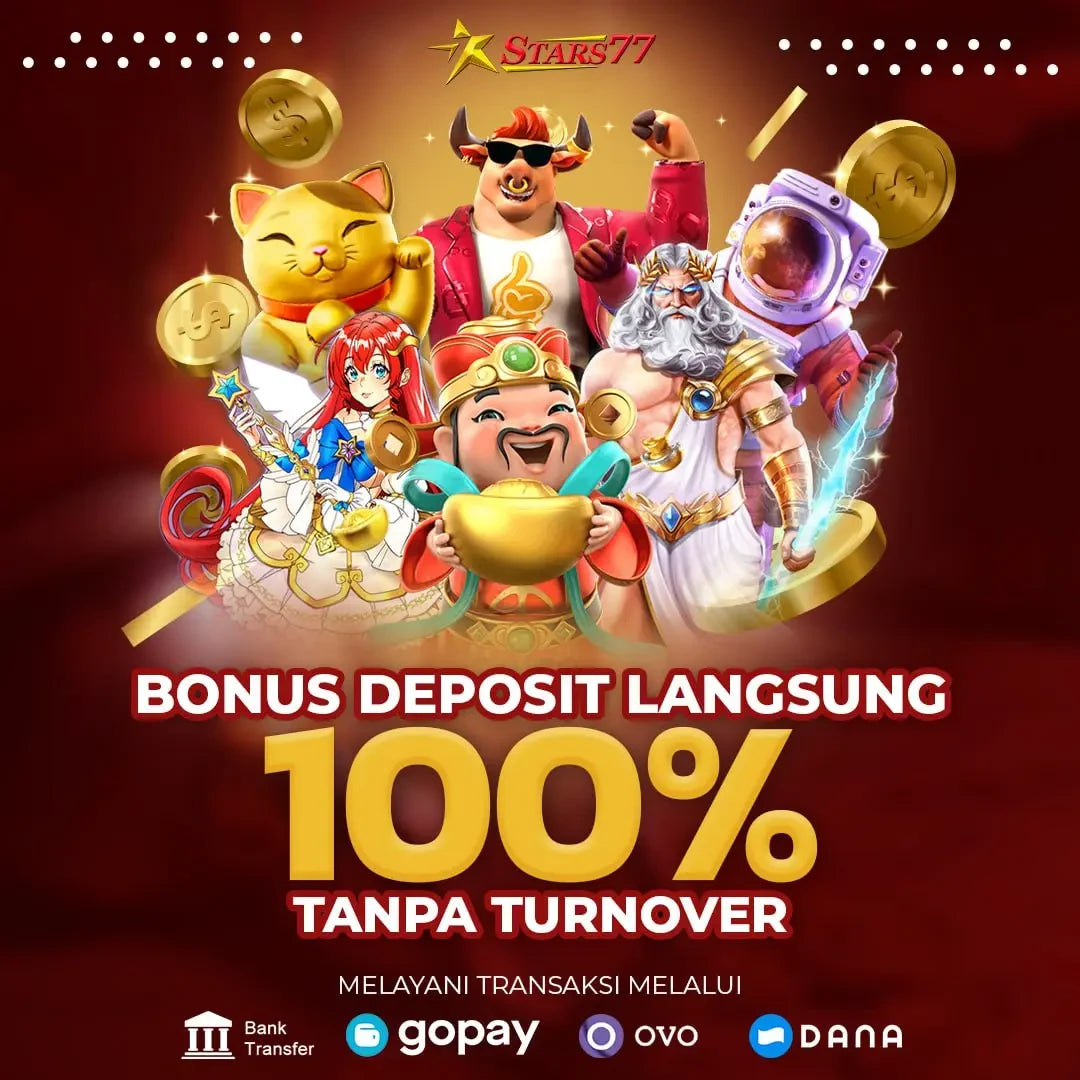Couldn't load pickup availability
Stars77
STARS77 Membagikan Strategi Bermain Judi Slot Online Agar Mudah Menang
STARS77 Membagikan Strategi Bermain Judi Slot Online Agar Mudah Menang
Couldn't load pickup availability
Judi slot online merupakan permainan kasino virtual yang menawarkan peluang untuk menang besar dengan taruhan kecil. Permainan slot online STARS77 ini semakin populer di Indonesia karena mudah dimainkan dan dapat diakses kapan saja dan di mana saja.
Namun, untuk meningkatkan peluang menang dalam judi slot online, diperlukan strategi yang tepat. Berikut beberapa strategi yang dapat Anda terapkan di STARS77:
1. Pilih STARS77, Situs Judi Slot Online Terpercaya:
Langkah pertama adalah memilih situs judi slot online terpercaya. STARS77 adalah situs judi slot online terpercaya dengan lisensi resmi dan reputasi terbaik di Indonesia. Kami menawarkan berbagai pilihan game slot online dari provider ternama dengan RTP tinggi.
2. Pelajari Cara Bermain:
Sebelum bermain, luangkan waktu untuk mempelajari cara kerja mesin slot online, simbol-simbol, dan fitur bonus yang tersedia di STARS77. Pahami aturan permainan dan volatilitas slot yang ingin Anda mainkan.
3. Manfaatkan Promo dan Bonus:
STARS77 menawarkan berbagai promo dan bonus menarik untuk pemain baru dan lama. Manfaatkan promo dan bonus tersebut untuk meningkatkan modal bermain Anda dan peluang untuk menang.
4. Gabung Komunitas STARS77:
STARS77 memiliki komunitas pemain yang aktif dan interaktif. Bergabunglah dengan komunitas untuk mendapatkan tips dan trik bermain slot online dari pemain lain, serta informasi terbaru tentang game dan promo.
5. Pilih Game Slot Online yang Tepat:
Pilihlah game slot online dengan RTP (Return to Player) tinggi di STARS77. RTP menunjukkan persentase pengembalian uang kepada pemain dalam jangka waktu lama. Pilihlah juga game slot online dengan volatilitas yang sesuai dengan gaya bermain Anda.
6. Atur Taruhan Anda:
Mulailah dengan taruhan kecil dan tingkatkan secara bertahap di STARS77. Jangan terburu-buru untuk memasang taruhan besar. Gunakan strategi taruhan yang sesuai dengan modal Anda.
7. Manfaatkan Fitur Bonus yang Diberikan:
Manfaatkan fitur bonus yang tersedia di game slot online di STARS77 untuk meningkatkan peluang Anda untuk menang. Fitur bonus seperti free spin, wild symbol, dan scatter symbol dapat memberikan keuntungan besar.
8. Bermainlah dengan Santai:
Hindari bermain saat Anda sedang marah atau frustrasi. Emosi negatif dapat membuat Anda mengambil keputusan yang salah saat bermain di STARS77. Bermainlah dengan santai dan fokus pada permainan.
9. Istirahatlah Secara Teratur:
Bermain judi slot online dalam waktu lama dapat membuat Anda lelah dan kehilangan fokus. Istirahatlah setiap 30-60 menit untuk menjaga konsentrasi Anda.
10. Bermain dengan Tanggung Jawab:
Judi slot online adalah permainan berisiko tinggi. Selalu bermain dengan tanggung jawab dan jangan pernah bertaruh melebihi kemampuan Anda.
Tingkatkan peluang menang Anda dalam judi slot online dengan panduan lengkap tips dan trik jitu dari STARS77. Temukan rahasia pro, RTP tinggi, dan strategi terbaik untuk memaksimalkan keuntungan!
Share

